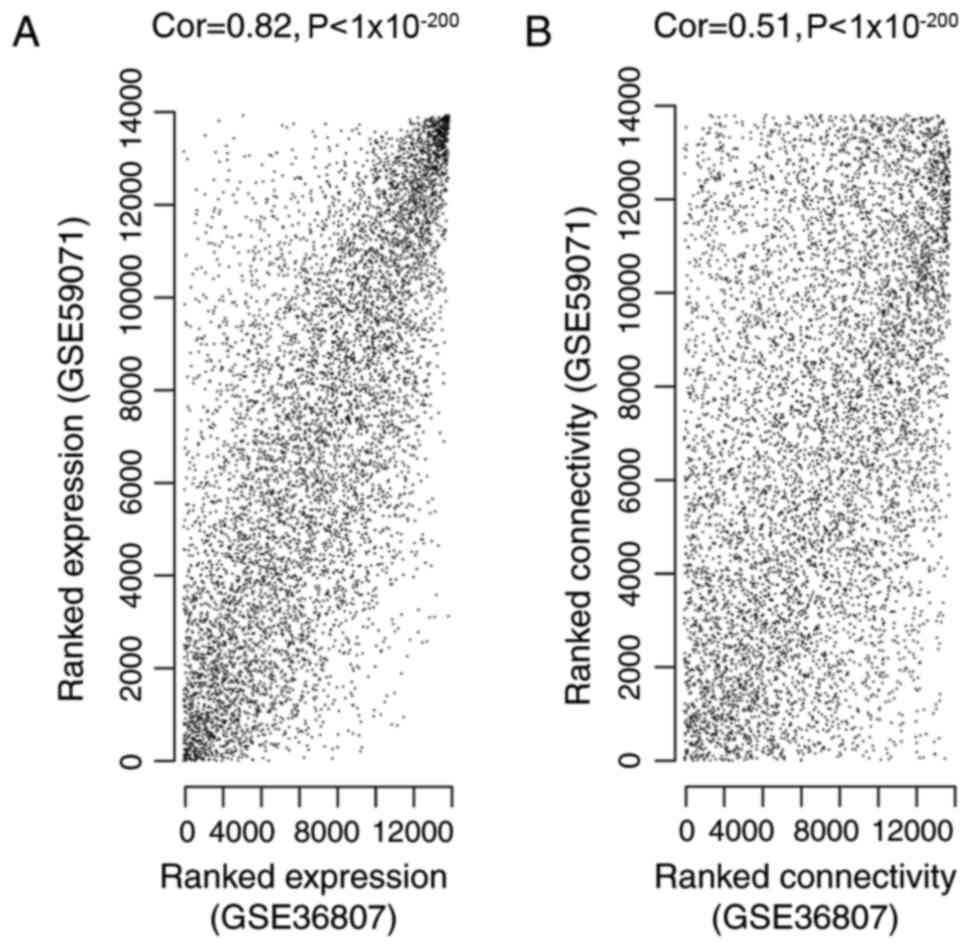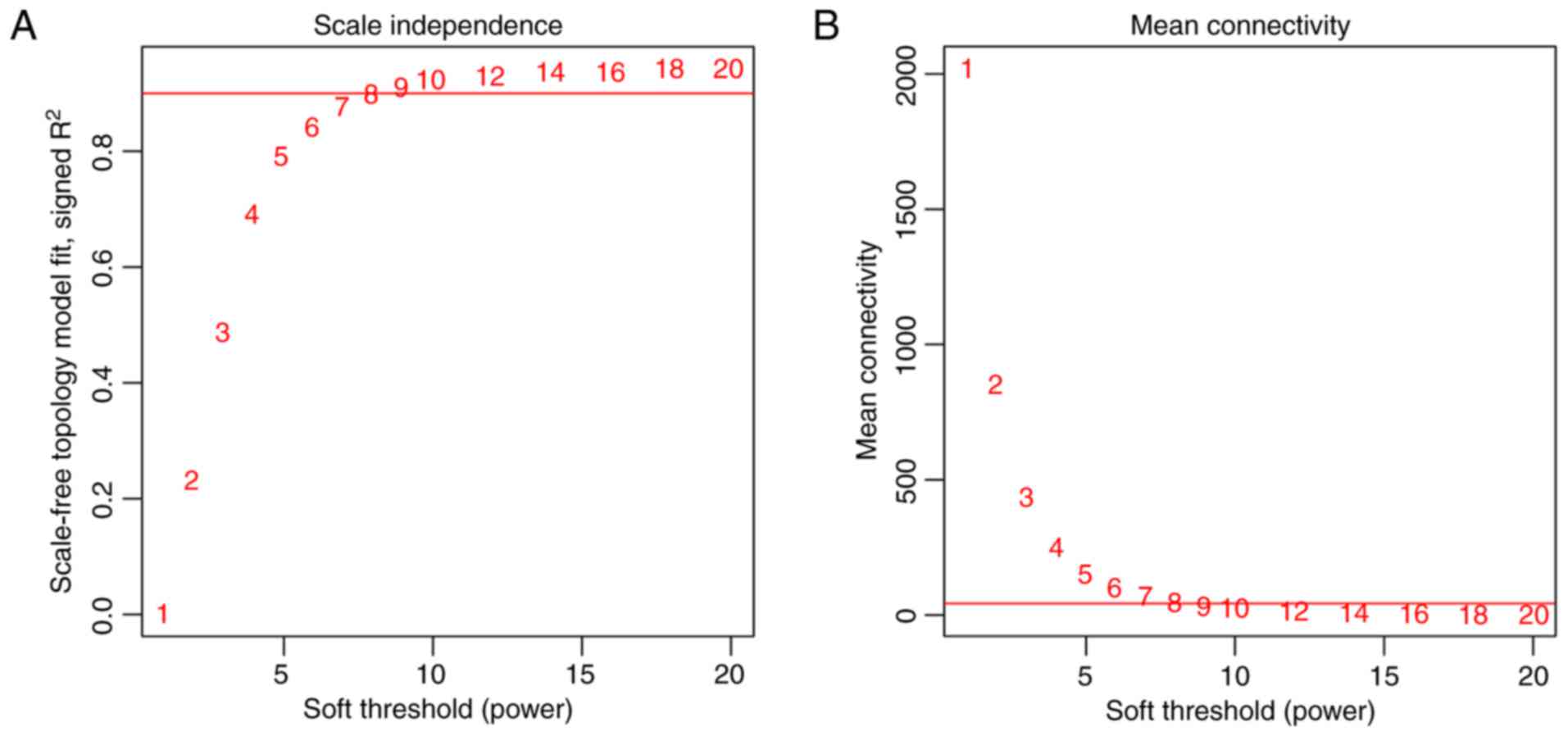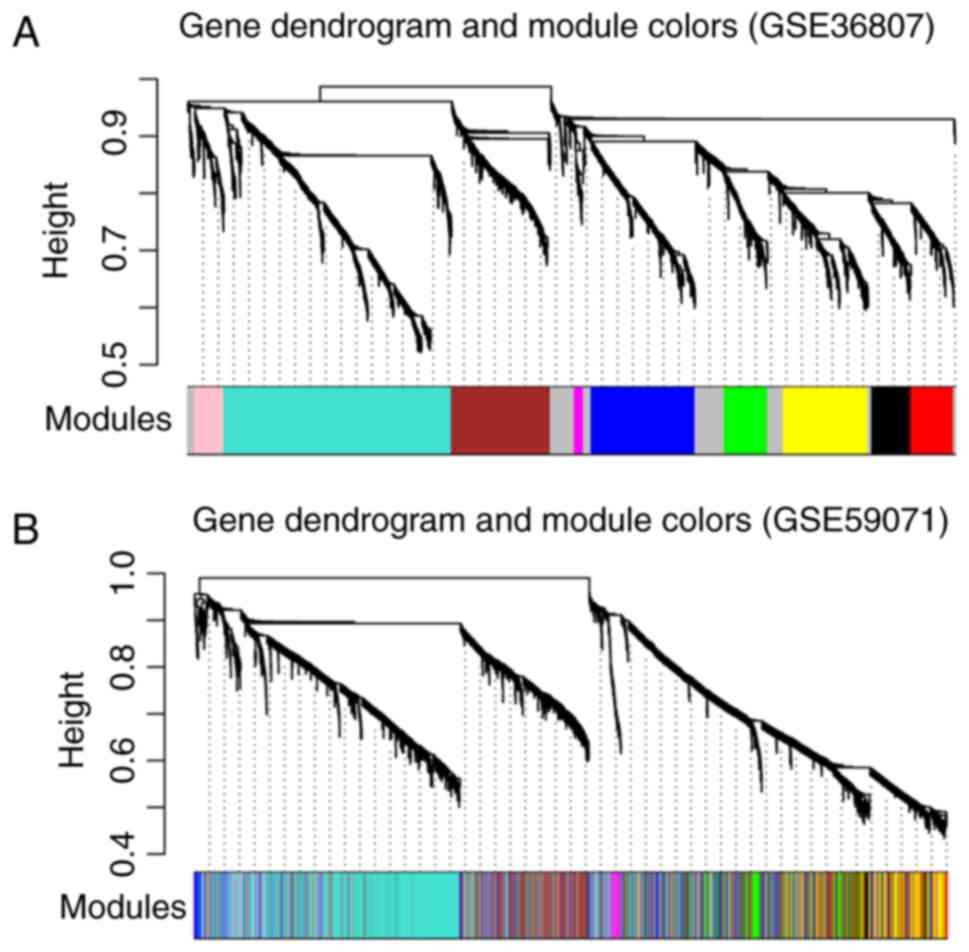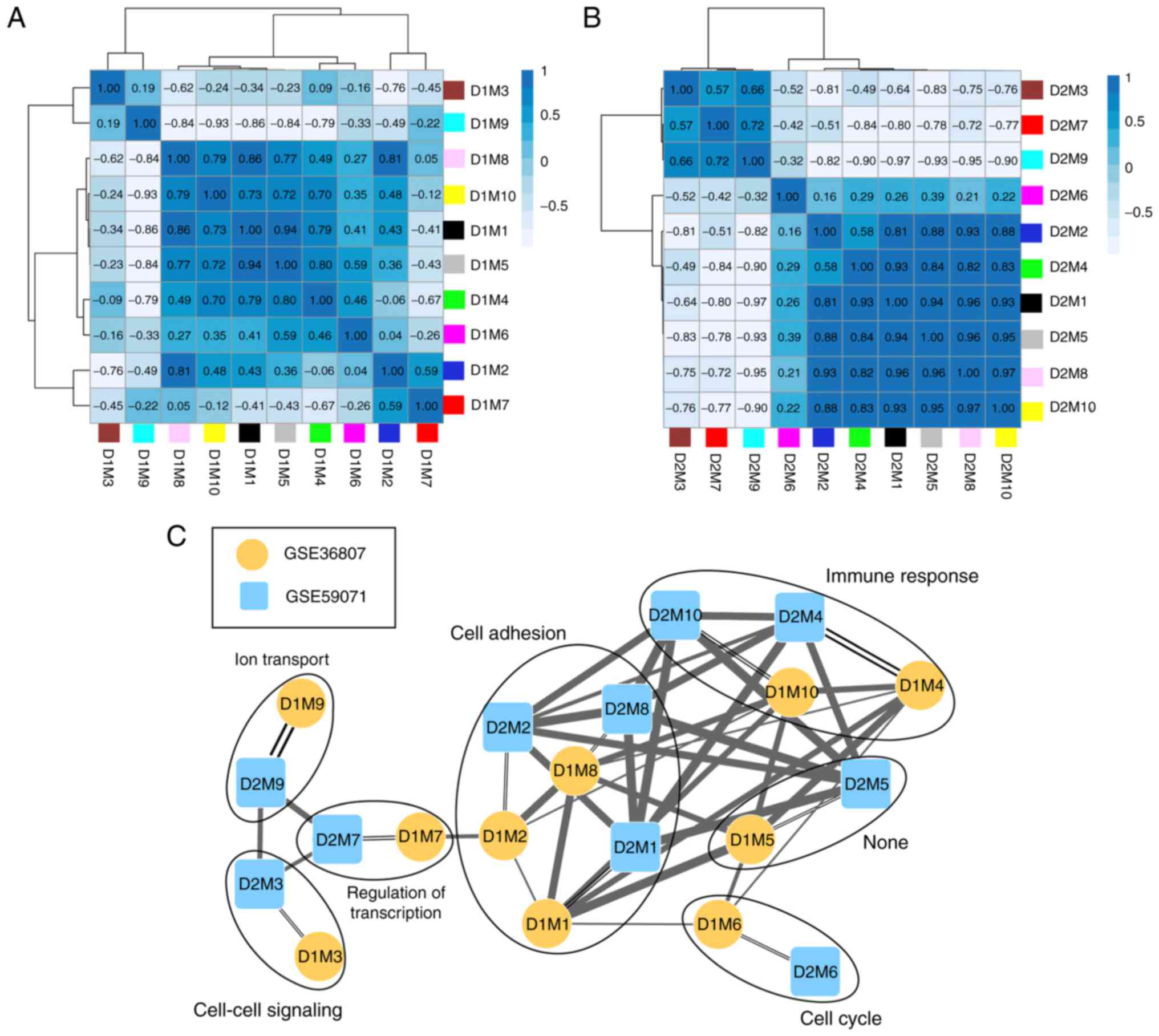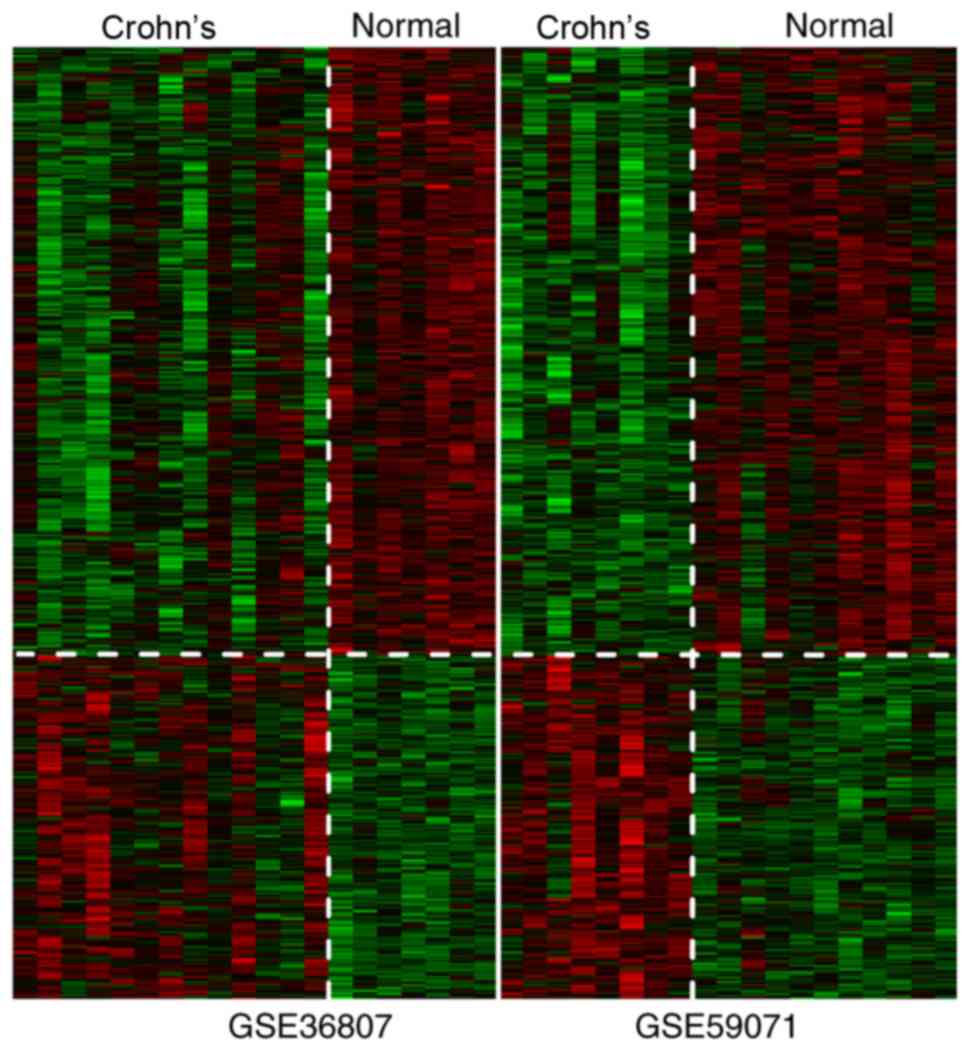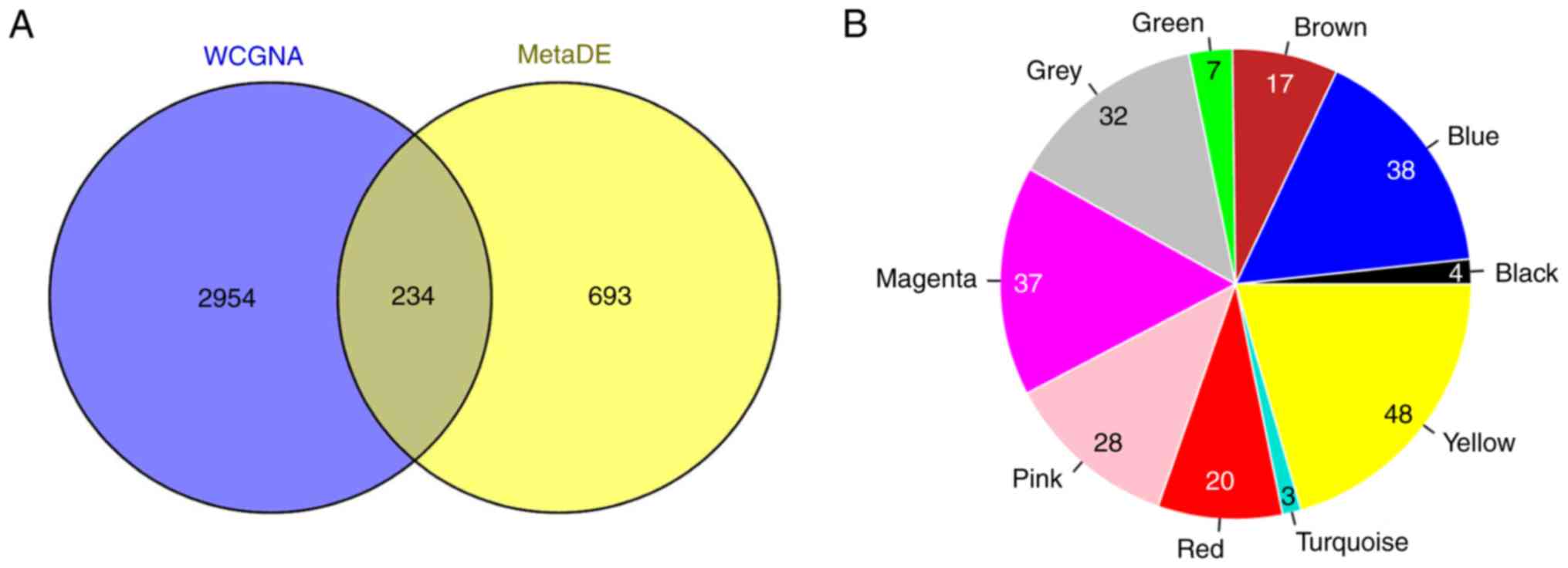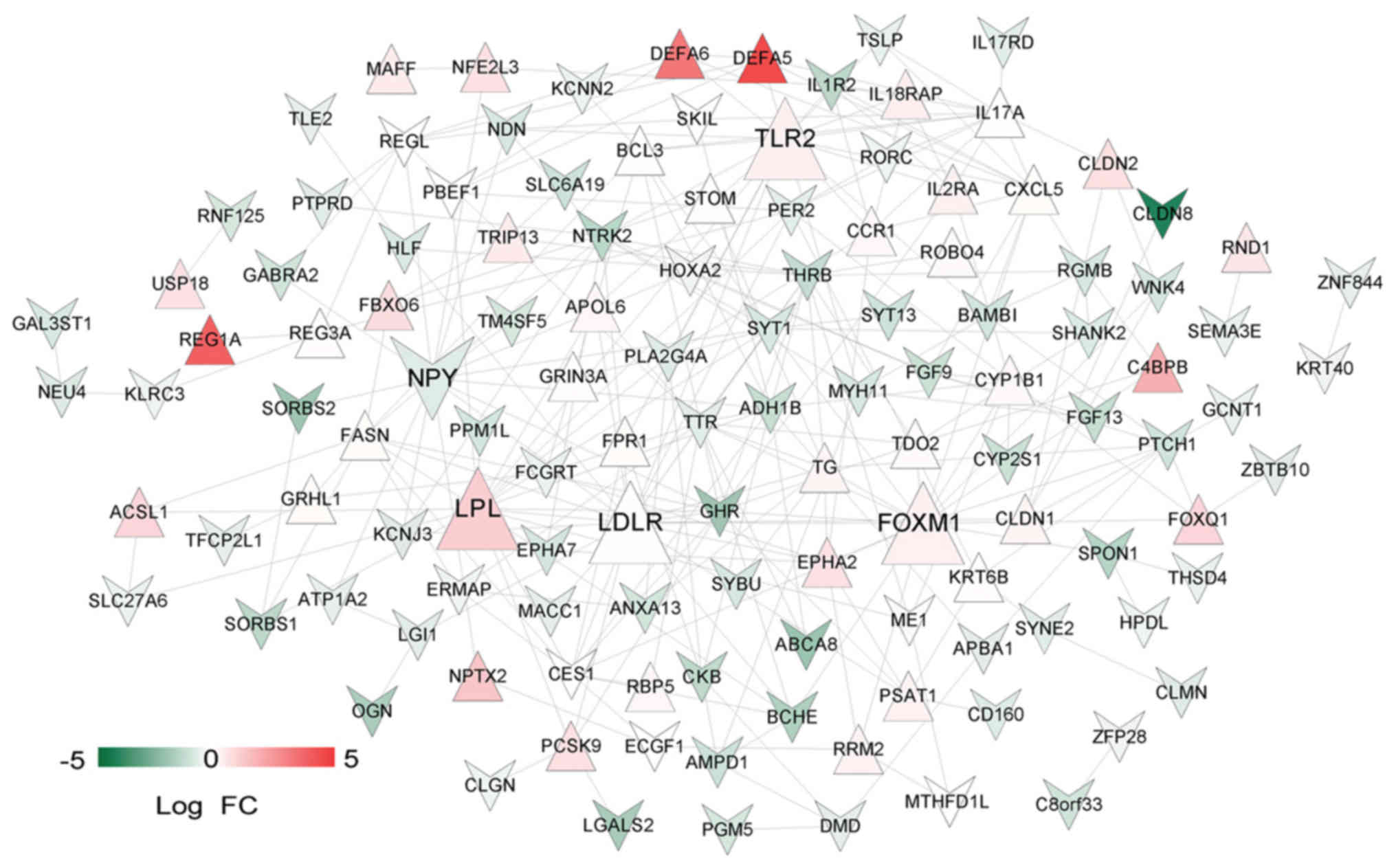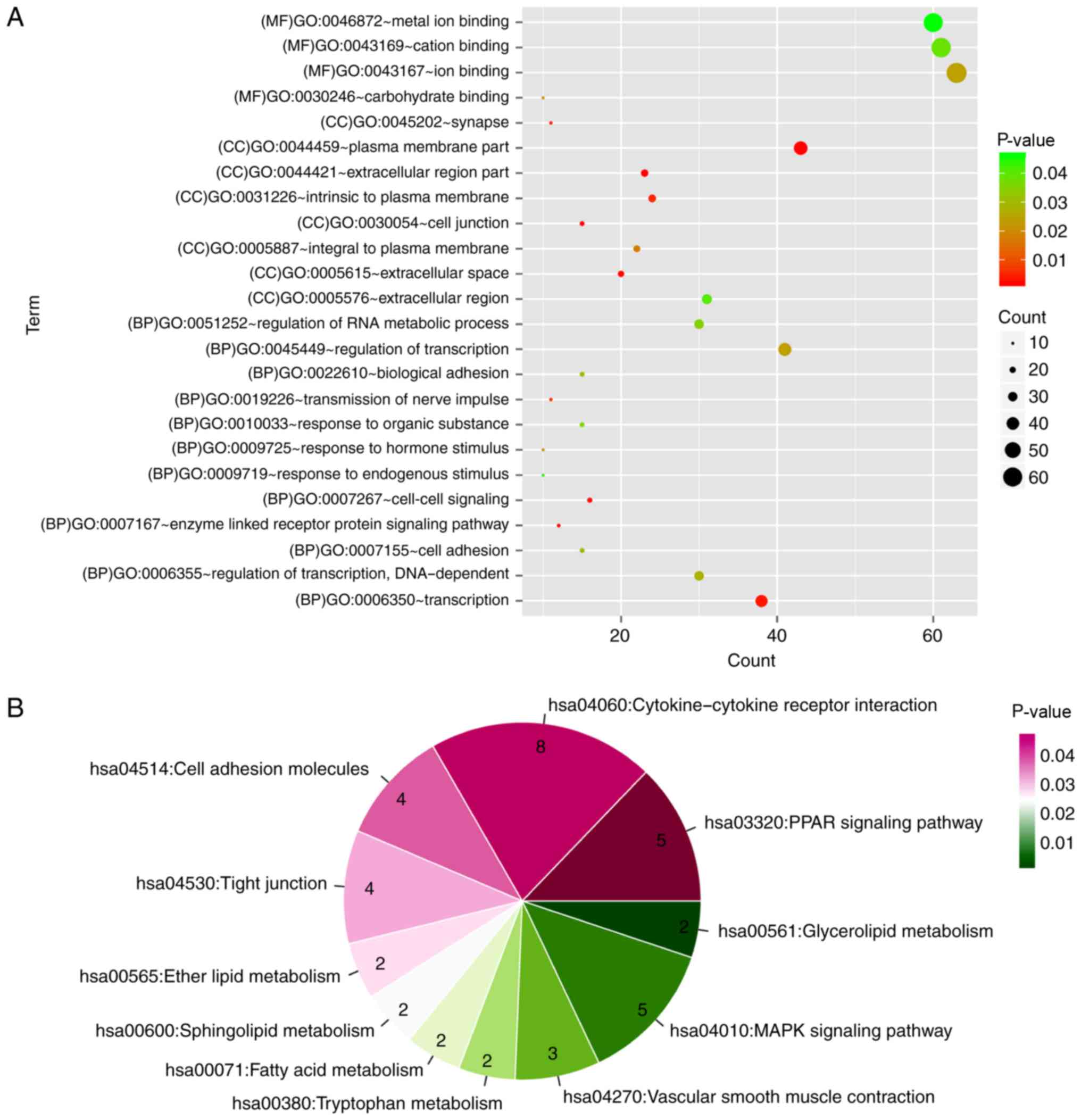|
1
|
Baumgart DC and Sandborn WJ: Crohn's
disease. Lancet. 380:1590–1605. 2012. View Article : Google Scholar : PubMed/NCBI
|
|
2
|
Cho JH and Brant SR: Recent insights into
the genetics of inflammatory bowel disease. Gastroenterology.
140:1704–1712. 2011. View Article : Google Scholar : PubMed/NCBI
|
|
3
|
Dessein R, Chamaillard M and Danese S:
Innate immunity in Crohn's disease: The reverse side of the medal.
J Clin Gastroenterol. 42 Suppl 3:S144–S147. 2008. View Article : Google Scholar : PubMed/NCBI
|
|
4
|
Stefanelli T, Malesci A, Repici A, Vetrano
S and Danese S: New insights into inflammatory bowel disease
pathophysiology: Paving the way for novel therapeutic targets.
Current Drug Targets. 9:413–418. 2008. View Article : Google Scholar : PubMed/NCBI
|
|
5
|
Hashash JG, Proksell S and Regueiro MD:
Crohn's disease with worsening symptoms. Gastroenterology.
145:e5–e6. 2013. View Article : Google Scholar : PubMed/NCBI
|
|
6
|
Mazor Y, Maza I, Kaufman E, Ben-Horin S,
Karban A, Chowers Y and Eliakim R: Prediction of disease
complication occurrence in Crohn's disease using phenotype and
genotype parameters at diagnosis. J Crohns Colitis. 5:592–597.
2011. View Article : Google Scholar : PubMed/NCBI
|
|
7
|
Hovde Ø and Moum BR: Epidemiology and
clinical course of Crohn's disease: Results from observational
studies. World J Gastroenterol. 18:1723–1731. 2012. View Article : Google Scholar : PubMed/NCBI
|
|
8
|
Burisch J and Munkholm P: Inflammatory
bowel disease epidemiology. Curr Opin Gastroenterol. 29:357–362.
2013. View Article : Google Scholar : PubMed/NCBI
|
|
9
|
Hut'an M and Hut'an Mm: The role of
surgery in Crohn's disease treatment. Rozhl Chir. 88:185–188.
2009.(In Slovak). PubMed/NCBI
|
|
10
|
Prescott NJ, Fisher SA, Franke A, Hampe J,
Onnie CM, Soars D, Bagnall R, Mirza MM, Sanderson J, Forbes A, et
al: A nonsynonymous SNP in ATG16L1 predisposes to ileal Crohn's
disease and is independent of CARD15 and IBD5. Gastroenterology.
132:1665–1671. 2007. View Article : Google Scholar : PubMed/NCBI
|
|
11
|
Kobayashi T, Okamoto S, Hisamatsu T,
Kamada N, Chinen H, Saito R, Kitazume MT, Nakazawa A, Sugita A,
Koganei K, et al: IL23 differentially regulates the Th1/Th17
balance in ulcerative colitis and Crohn's disease. Gut.
57:1682–1689. 2008. View Article : Google Scholar : PubMed/NCBI
|
|
12
|
Siakavellas SI and Bamias G: Role of the
IL-23/IL-17 axis in Crohn's disease. Discov Med. 14:253–262.
2012.PubMed/NCBI
|
|
13
|
Ferguson LR, Han DY, Fraser AG, Huebner C,
Lam WJ, Morgan AR, Duan H and Karunasinghe N: Genetic factors in
chronic inflammation: Single nucleotide polymorphisms in the
STAT-JAK pathway, susceptibility to DNA damage and Crohn's disease
in a New Zealand population. Mutat Res. 690:108–115. 2010.
View Article : Google Scholar : PubMed/NCBI
|
|
14
|
Nabatov AA: The vesicle-associated
function of NOD2 as a link between Crohn's disease and
mycobacterial infection. Gut Pathog. 7:12015. View Article : Google Scholar : PubMed/NCBI
|
|
15
|
Balasubramanian I and Gao N: From sensing
to shaping microbiota: Insights into the role of NOD2 in intestinal
homeostasis and progression of Crohn's Disease. Am J Physiol
Gastrointest Liver Physiol. 313:G7–G13. 2017. View Article : Google Scholar : PubMed/NCBI
|
|
16
|
Zhang Y, Szustakowski J and Schinke M:
Bioinformatics analysis of microarray data. Methods Mol Biol.
573:259–284. 2009. View Article : Google Scholar : PubMed/NCBI
|
|
17
|
Kenny EE, Pe'er I, Karban A, Ozelius L,
Mitchell AA, Ng SM, Erazo M, Ostrer H, Abraham C, Abreu MT, et al:
A genome-wide scan of Ashkenazi jewish Crohn's disease suggests
novel susceptibility loci. PLoS Genet. 8:e10025592012. View Article : Google Scholar : PubMed/NCBI
|
|
18
|
Fransen K, Visschedijk MC, van Sommeren S,
Fu JY, Franke L, Festen EA, Stokkers PC, van Bodegraven AA, Crusius
JB, Hommes DW, et al: Analysis of SNPs with an effect on gene
expression identifies UBE2L3 and BCL3 as potential new risk genes
for Crohn's disease. Hum Mol Genet. 19:3482–3488. 2010. View Article : Google Scholar : PubMed/NCBI
|
|
19
|
Montero-Melendez T, Llor X,
Garcia-Planella E, Perretti M and Suárez A: Identification of novel
predictor classifiers for inflammatory bowel disease by gene
expression profiling. PLoS One. 8:e762352013. View Article : Google Scholar : PubMed/NCBI
|
|
20
|
Vanhove W, Peeters PM, Staelens D,
Schraenen A, Van der Goten J, Cleynen I, De Schepper S, Van Lommel
L, Reynaert NL, Schuit F, et al: Strong upregulation of AIM2 and
IFI16 inflammasomes in the mucosa of patients with active
inflammatory bowel disease. Inflamm Bowel Dis. 21:2673–2682. 2015.
View Article : Google Scholar : PubMed/NCBI
|
|
21
|
Parrish RS and Spencer HJ III: Effect of
normalization on significance testing for oligonucleotide
microarrays. J Biopharm Stat. 14:575–589. 2004. View Article : Google Scholar : PubMed/NCBI
|
|
22
|
Langfelder P and Horvath S: WGCNA: An R
package for weighted correlation network analysis. BMC
Bioinformatics. 9:5592008. View Article : Google Scholar : PubMed/NCBI
|
|
23
|
Wang X, Kang DD, Shen K, Song C, Lu S,
Chang LC, Liao SG, Huo Z, Tang S, Ding Y, et al: An R package suite
for microarray meta-analysis in quality control, differentially
expressed gene analysis and pathway enrichment detection.
Bioinformatics. 28:2534–2536. 2012. View Article : Google Scholar : PubMed/NCBI
|
|
24
|
Oughtred R, Chatraryamontri A, Breitkreutz
BJ, Chang CS, Rust JM, Theesfeld CL, Heinicke S, Breitkreutz A,
Chen D, Hirschman J, et al: BioGRID: A resource for studying
biological interactions in yeast. Cold Spring Harb Protoc.
2016:pdb.top080754. 2016. View Article : Google Scholar
|
|
25
|
Liu B and Hu B: HPRD: A high performance
RDF database. Int J Parallel Emergent Distributed Systems.
25:123–133. 2010. View Article : Google Scholar
|
|
26
|
Szklarczyk D, Franceschini A, Wyder S,
Forslund K, Heller D, Huerta-Cepas J, Simonovic M, Roth A, Santos
A, Tsafou KP, et al: STRING v10: Protein-protein interaction
networks, integrated over the tree of life. Nucleic Acids Res.
43:(Database Issue). D447–D452. 2015. View Article : Google Scholar : PubMed/NCBI
|
|
27
|
Kohl M, Wiese S and Warscheid B:
Cytoscape: Software for visualization and analysis of biological
networks. Methods Mol Biol. 696:291–303. 2011. View Article : Google Scholar : PubMed/NCBI
|
|
28
|
Dennis G Jr, Sherman BT, Hosack DA, Yang
J, Gao W, Lane HC and Lempicki RA: DAVID: Database for annotation,
visualization, and integrated discovery. Genome Biol. 4:P32003.
View Article : Google Scholar : PubMed/NCBI
|
|
29
|
Gene Ontology Consortium: Gene ontology
consortium: Going forward. Nucleic Acids Res. 43:(Database Issue).
D1049–D1056. 2015. View Article : Google Scholar : PubMed/NCBI
|
|
30
|
Kanehisa M, Sato Y, Kawashima M, Furumichi
M and Tanabe M: KEGG as a reference resource for gene and protein
annotation. Nucleic Acids Res. 44:D457–D462. 2015. View Article : Google Scholar : PubMed/NCBI
|
|
31
|
Strickland DK, Au DT, Cunfer P and
Muratoglu SC: Low-density lipoprotein receptor-related protein-1:
Role in the regulation of vascular integrity. Arterioscler Thromb
Vasc Biol. 34:487–498. 2014. View Article : Google Scholar : PubMed/NCBI
|
|
32
|
Fantus D, Awan Z, Seidah NG and Genest J:
Aortic calcification: Novel insights from familial
hypercholesterolemia and potential role for the low-density
lipoprotein receptor. Atherosclerosis. 226:9–15. 2013. View Article : Google Scholar : PubMed/NCBI
|
|
33
|
Ruan XZ, Varghese Z, Powis SH and Moorhead
JF: Dysregulation of LDL receptor under the influence of
inflammatory cytokines: A new pathway for foam cell formation.
Kidney Int. 60:1716–1725. 2001. View Article : Google Scholar : PubMed/NCBI
|
|
34
|
Ren X, Shah TA, Ustiyan V, Zhang Y, Shinn
J, Chen G, Whitsett JA, Kalin TV and Kalinichenko VV: FOXM1
promotes allergen-induced goblet cell metaplasia and pulmonary
inflammation. Mol Cell Biol. 33:371–386. 2013. View Article : Google Scholar : PubMed/NCBI
|
|
35
|
Kim IM, Zhou Y, Ramakrishna S, Hughes DE,
Solway J, Costa RH and Kalinichenko VV: Functional characterization
of evolutionarily conserved DNA regions in forkhead box f1 gene
locus. J Biol Chem. 280:37908–37916. 2005. View Article : Google Scholar : PubMed/NCBI
|
|
36
|
Feng Y, Wang L, Zeng J, Shen L, Liang X,
Yu H, Liu S, Liu Z, Sun Y, Li W, et al: FoxM1 is Overexpressed in
Helicobacter pylori-induced gastric carcinogenesis and is
negatively regulated by miR-370. Mol Cancer Res. 11:834–844. 2013.
View Article : Google Scholar : PubMed/NCBI
|
|
37
|
Ziouzenkova O, Perrey S, Asatryan L, Hwang
J, MacNaul KL, Moller DE, Rader DJ, Sevanian A, Zechner R, Hoefler
G and Plutzky J: Lipolysis of triglyceride-rich lipoproteins
generates PPAR ligands: Evidence for an antiinflammatory role for
lipoprotein lipase. Proc Natl Acad Sci USA. 100:2730–2735. 2003.
View Article : Google Scholar : PubMed/NCBI
|
|
38
|
Tyagi S, Gupta P, Saini AS, Kaushal C and
Sharma S: The peroxisome proliferator-activated receptor: A family
of nuclear receptors role in various diseases. J Adv Pharm Technol
Res. 2:236–240. 2011. View Article : Google Scholar : PubMed/NCBI
|
|
39
|
Ooi EM, Watts GF, Sprecher DL, Chan DC and
Barrett PH: Mechanism of action of a peroxisome
proliferator-activated receptor (PPAR)-delta agonist on lipoprotein
metabolism in dyslipidemic subjects with central obesity. J Clin
Endocrinol Metab. 96:E1568–E1576. 2011. View Article : Google Scholar : PubMed/NCBI
|
|
40
|
Herro R and Croft M: The control of tissue
fibrosis by the inflammatory molecule LIGHT (TNF Superfamily member
14). Pharmacol Res. 104:151–155. 2016. View Article : Google Scholar : PubMed/NCBI
|
|
41
|
Liu TC, Naito T, Liu Z, VanDussen KL,
Haritunians T, Li D, Endo K, Kawai Y, Nagasaki M, Kinouchi Y, et
al: LRRK2 but not ATG16L1 is associated with Paneth cell defect in
Japanese Crohn's disease patients. JCI Insight. 2:e919172017.
View Article : Google Scholar : PubMed/NCBI
|
|
42
|
Serena C, Keiran N, Madeira A, Maymó-Masip
E, Ejarque M, Terrón-Puig M, Espin E, Martí M, Borruel N, Guarner
F, et al: Crohn's disease disturbs the immune properties of human
Adipose-derived stem cells related to inflammasome activation. Stem
Cell Reports. 9:1109–1123. 2017. View Article : Google Scholar : PubMed/NCBI
|
|
43
|
Kawai T and Akira S: Toll-like receptors
and their crosstalk with other innate receptors in infection and
immunity. Immunity. 34:637–650. 2011. View Article : Google Scholar : PubMed/NCBI
|
|
44
|
Yuk JM and Jo EK: Toll-like receptors and
innate immunity. J Bacteriol Virol. 41:225–235. 2011. View Article : Google Scholar
|
|
45
|
Frolova L, Drastich P, Rossmann P,
Klimesova K and Tlaskalova-Hogenova H: Expression of Toll-like
receptor 2 (TLR2), TLR4, and CD14 in biopsy samples of patients
with inflammatory bowel diseases: Upregulated expression of TLR2 in
terminal ileum of patients with ulcerative colitis. J Histochem
Cytochem. 56:267–274. 2008. View Article : Google Scholar : PubMed/NCBI
|
|
46
|
Netea MG, Kullberg BJ, de Jong DJ, Franke
B, Sprong T, Naber TH, Drenth JP and Van der Meer JW: NOD2 mediates
anti-inflammatory signals induced by TLR2 ligands: Implications for
Crohn's disease. Eur J Immunol. 34:2052–2059. 2004. View Article : Google Scholar : PubMed/NCBI
|
|
47
|
Szebeni B, Mraz M, Veres G, Dezsofi A,
Vannay A, Vasarhelyi B, Majorova E and Arato A: Increased
expression of toll-like receptor (Tlr) 2 and Tlr4 in the colonic
mucosa of children with active inflammatory bowel disease. J Pediat
Gastroenterol Nutrition. 42:34–41. 2006.
|
|
48
|
Hausmann M, Kiessling S, Mestermann S,
Webb G, Spöttl T, Andus T, Schölmerich J, Herfarth H, Ray K, Falk W
and Rogler G: Toll-like receptors 2 and 4 are up-regulated during
intestinal inflammation. Gastroenterology. 122:1987–2000. 2002.
View Article : Google Scholar : PubMed/NCBI
|
|
49
|
Cosin-Roger J, Spalinger MR, Ruiz PA,
Stanzel C, Terhalle A, Wolfram L, Melhem H, Atrott K, Lang S,
Frey-Wagner I, et al: Gp96 deficiency affects TLR4 functionality
and impairs ERK and p38 phosphorylation. PLoS One. 13:e01930032018.
View Article : Google Scholar : PubMed/NCBI
|
|
50
|
Chandrasekharan B, Bala V, Kolachala VL,
Vijay-Kumar M, Jones D, Gewirtz AT, Sitaraman SV and Srinivasan S:
Targeted deletion of neuropeptide Y (NPY) modulates experimental
colitis. PLoS One. 3:e33042008. View Article : Google Scholar : PubMed/NCBI
|
|
51
|
Hassani H, Lucas G, Rozell B and Ernfors
P: Attenuation of acute experimental colitis by preventing NPY Y1
receptor signaling. Am J Physiol Gastrointest Liver Physiol.
288:G550–G556. 2005. View Article : Google Scholar : PubMed/NCBI
|
|
52
|
Chandrasekharan B, Nezami BG and
Srinivasan S: Emerging neuropeptide targets in inflammation: NPY
and VIP. Am J Physiol Gastrointest Liver Physiol. 304:G949–G957.
2013. View Article : Google Scholar : PubMed/NCBI
|
|
53
|
Vona-Davis LC and McFadden DW: NPY family
of hormones: Clinical relevance and potential use in
gastrointestinal disease. Curr Top Med Chem. 7:1710–1720. 2007.
View Article : Google Scholar : PubMed/NCBI
|
|
54
|
El-Salhy M and Hausken T: The role of the
neuropeptide Y (NPY) family in the pathophysiology of inflammatory
bowel disease (IBD). Neuropeptides. 55:137–144. 2016. View Article : Google Scholar : PubMed/NCBI
|















